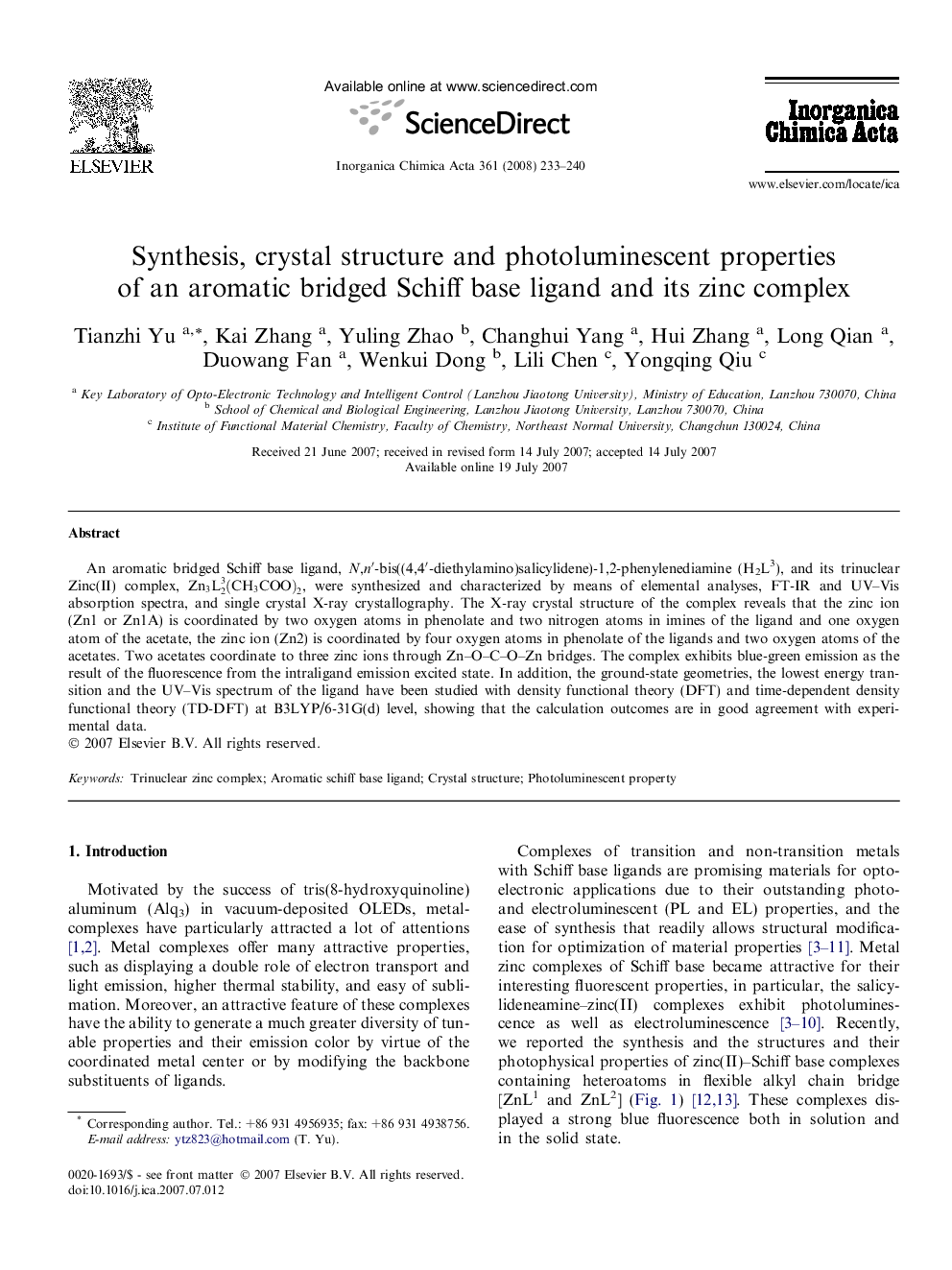| Article ID | Journal | Published Year | Pages | File Type |
|---|---|---|---|---|
| 1307587 | Inorganica Chimica Acta | 2008 | 8 Pages |
An aromatic bridged Schiff base ligand, N,n′-bis((4,4′-diethylamino)salicylidene)-1,2-phenylenediamine (H2L3), and its trinuclear Zinc(II) complex, Zn3L23(CH3COO)2, were synthesized and characterized by means of elemental analyses, FT-IR and UV–Vis absorption spectra, and single crystal X-ray crystallography. The X-ray crystal structure of the complex reveals that the zinc ion (Zn1 or Zn1A) is coordinated by two oxygen atoms in phenolate and two nitrogen atoms in imines of the ligand and one oxygen atom of the acetate, the zinc ion (Zn2) is coordinated by four oxygen atoms in phenolate of the ligands and two oxygen atoms of the acetates. Two acetates coordinate to three zinc ions through Zn–O–C–O–Zn bridges. The complex exhibits blue-green emission as the result of the fluorescence from the intraligand emission excited state. In addition, the ground-state geometries, the lowest energy transition and the UV–Vis spectrum of the ligand have been studied with density functional theory (DFT) and time-dependent density functional theory (TD-DFT) at B3LYP/6-31G(d) level, showing that the calculation outcomes are in good agreement with experimental data.
Graphical abstractAn aromatic bridged Schiff base ligand and its trinuclear Zinc(II) complex were synthesized and characterized by single crystal X-ray crystallography. In the Zn-complex two zinc ions show the coordination number of five and the third one has six, two acetates coordinate to three zinc ions through Zn–O–C–O–Zn bridges. The complex exhibits blue-green emission at 504 nm.Figure optionsDownload full-size imageDownload as PowerPoint slide
